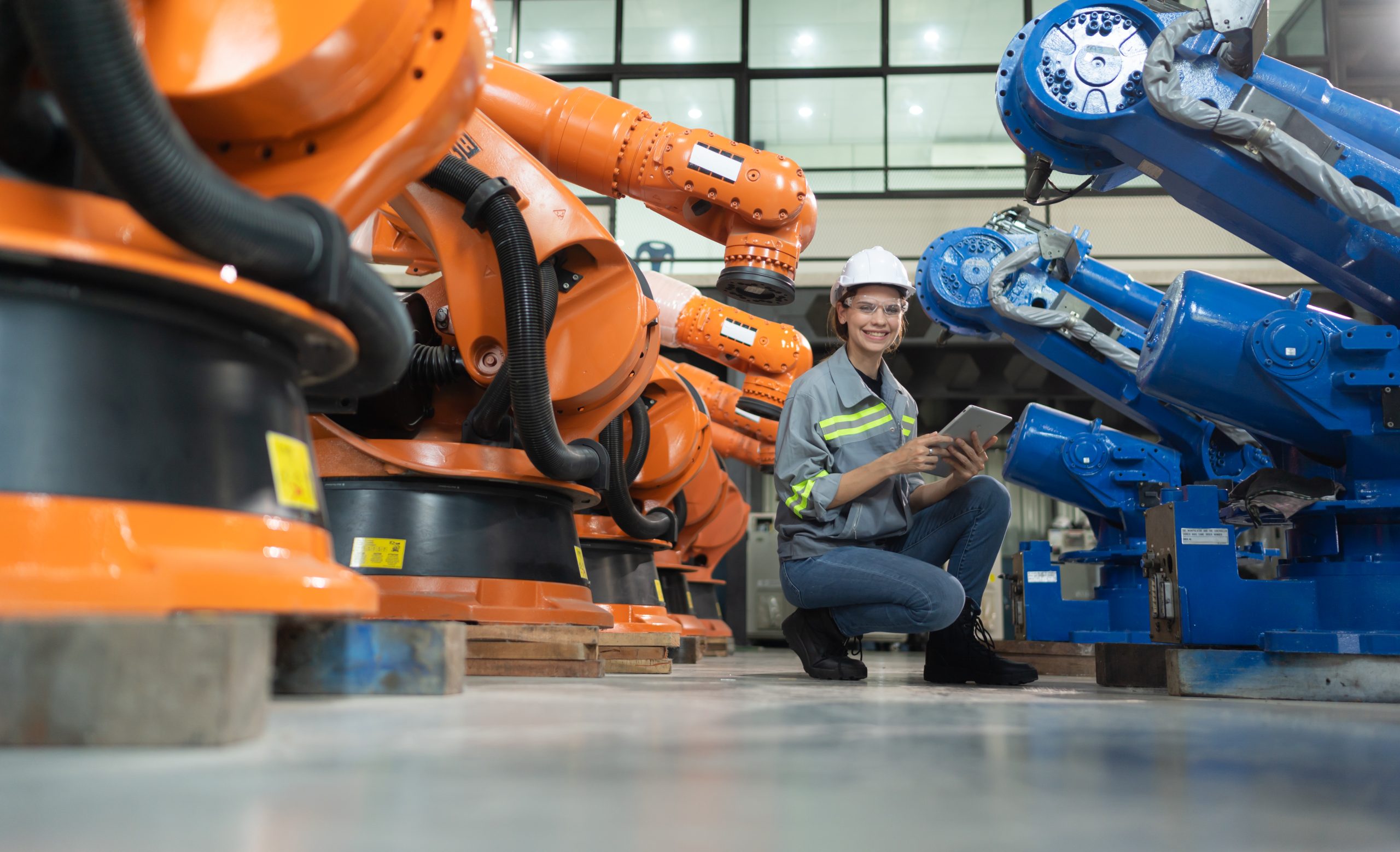
Since the Industrial Revolution, production technologies have evolved with each new phase, becoming faster, more efficient, and more automated. This journey, which began with steam engines, continued with electricity, computers, automation, and artificial intelligence. However, in the fully automated, robotic world of Industry 4.0, the role of humans was, for a time, overshadowed.
Now, a brand-new era is dawning: Industry 5.0.
Industry 5.0 represents a paradigm where machines and humans don’t replace each other but work together to make production smarter, more personalized, and more human-centric. This new vision of production focuses not only on increasing efficiency but also on combining human creativity and values with the speed and power of machines.
From Industry 4.0 to 5.0: Automation Alone Wasn’t Enough
Industry 4.0 made fully automated production possible through technologies like smart factories, the Internet of Things (IoT), big data analytics, and artificial intelligence. However, the cold efficiency of fully automated systems sidelined critical needs such as flexibility and human-centricity. As demand for personalized products grew and societal values shifted toward sustainability, ethical production, and human well-being, the need for a new approach became clear.
This is where Industry 5.0 steps onto the stage.
A Production Model Where Humans and Robots Work Hand in Hand
At the core of Industry 5.0 lies human-robot collaboration. Machines are no longer designed to replace humans but to work alongside them. In this partnership, robots provide speed, precision, and strength, while humans bring creativity, problem-solving, empathy, and flexibility.
For example, in an automotive factory, robots can assemble heavy components with millimeter precision, while human workers add personalized touches based on customer preferences. Or, in a healthcare technology company, AI conducts medical analyses, while doctors provide human interpretation and ethical decision-making.
The Rise of Sustainable and Human-Centric Production
Industry 5.0 is redefining not only production processes but also the purpose of production itself. Sustainability, ethical values, employee well-being, and societal impact are gaining greater importance in this new era. Companies that combine the efficiency of automation with human-centric design, eco-friendly production, and personalized customer experiences are gaining a competitive edge.
A World Where Technology and Humans Learn Together
Industry 5.0 fosters a work culture where machines and humans learn from each other. AI systems continuously improve through feedback from humans, while humans make faster, more informed decisions thanks to data-driven insights. This mutual learning process makes businesses more agile and innovative.
The Future Workforce: Human + Machine Competencies
Industry 5.0 is also reshaping the definition of the workforce. Beyond technical skills, human competencies are becoming critical. Problem-solving, creative thinking, communication, and empathy—skills machines cannot yet replicate—make humans indispensable.
At the same time, employees need to work seamlessly with technology, making data literacy, AI awareness, and the ability to interact with robotic systems increasingly important.
The Future of Production Requires Walking Hand in Hand
Industry 5.0 promises a future where machines don’t replace humans but where humans and technology produce better outcomes together. We are moving from cold, efficiency-focused automation to a smart production approach that centers human values. This transformation will not only impact the manufacturing sector but also create new business models and human-centric design approaches in fields from education to healthcare, retail to services. The future belongs not to robots or humans alone but to human + machine teams working hand in hand.
